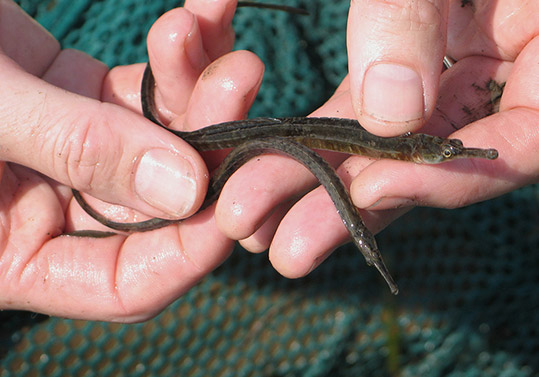Northern Pipefish
The northern pipefish is a saltwater species common in the lower Hudson estuary. Related to the seahorse, our pipefish isn’t more than eight inches long. Its long, skinny shape keeps it well hidden in weeds. Often a pipefish uses its dorsal fin to move around, while keeping its body very still. This gives the fish the appearance of a drifting stem of grass. However, it can swim quickly in short bursts.
Much like you use a straw, a pipefish uses its tube-like snout and tiny mouth to suck up tiny crustaceans. Male pipefish do much of the work of child-raising, incubating eggs that a female places in folds of skin on a male’s belly.

Sometimes pipefish are confused with the needlefish. The pipefish’s small mouth is at the very end of its tube-like snout, and the fish has bony rings around its body. The needlefish’s mouth is long like a set of tweezers, and the fish does not have bony rings. Both are found in salty and brackish water, though needlefish can sometimes be caught in fresh water as well.

